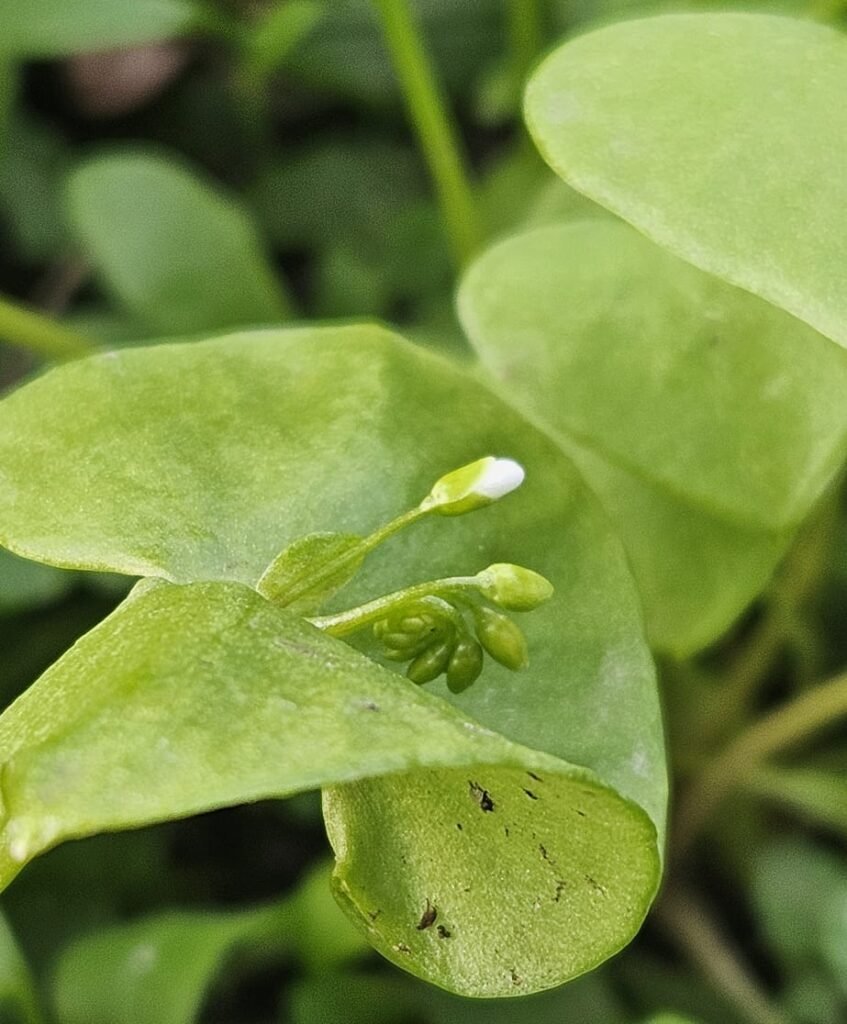
Miner’s Lettuce
(Claytonia perfoliata)
Description
Miner’s lettuce is an annual flowering plant. The plant’s leaves grow individually on long stems, sprouting from the base. The plant is usually relatively short, but can grow up to around 35 cm tall. The leaves of younger plants are spade-shaped. When the plant is older, it grows flower stems with a disc (perfoliate leaf), formed of two fused leaves. The flowers are white and have five petals. They grow just above the perfoliate leaf, and can also appear on stems growing further than the leaf.
Distribution

Miner’s lettuce is native to North America and is non-native to Europe (but not classified as invasive). These plants usually grow densely in patches.
The plant emerges around February and comes into flower between March and May.
Etymology and uses
Miner’s lettuce is also known by the names Winter purslane, Indian lettuce, or Spring beauty.
The name ‘miner’s lettuce’ supposedly comes from the American gold rush, when goldminers would eat the leaves.
The plant’s leaves, flowers, and stems are edible and the leaves can be used, either raw or cooked, similarly to spinach. Miner’s lettuce is a good source of vitamin C, so has been used to prevent scurvy.



RELATED POSTS
View all


